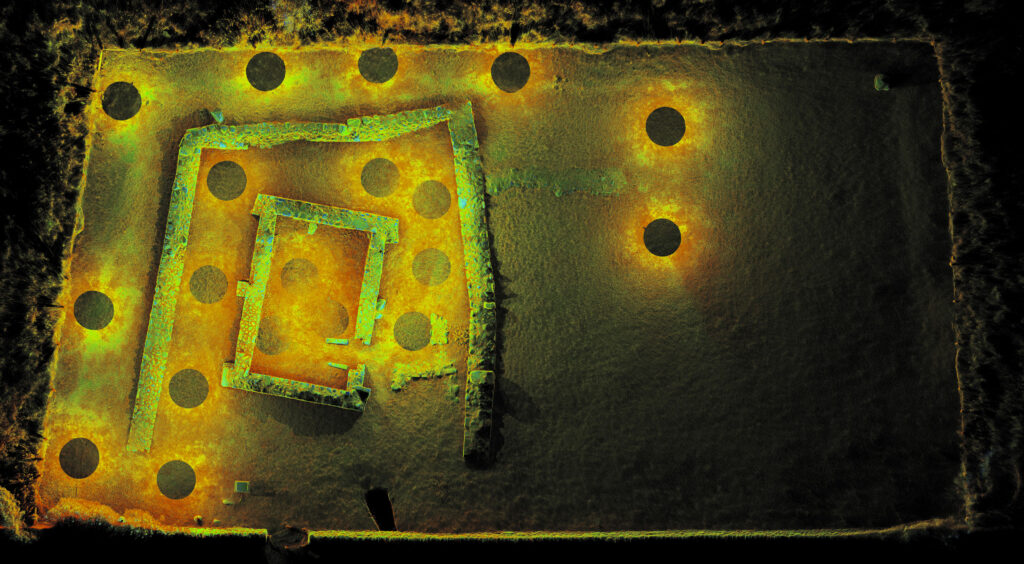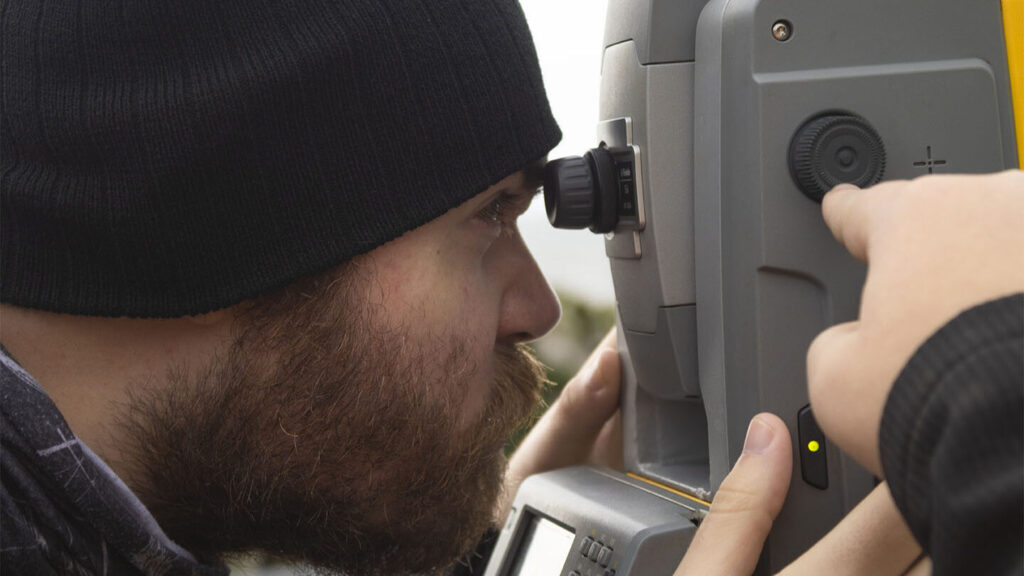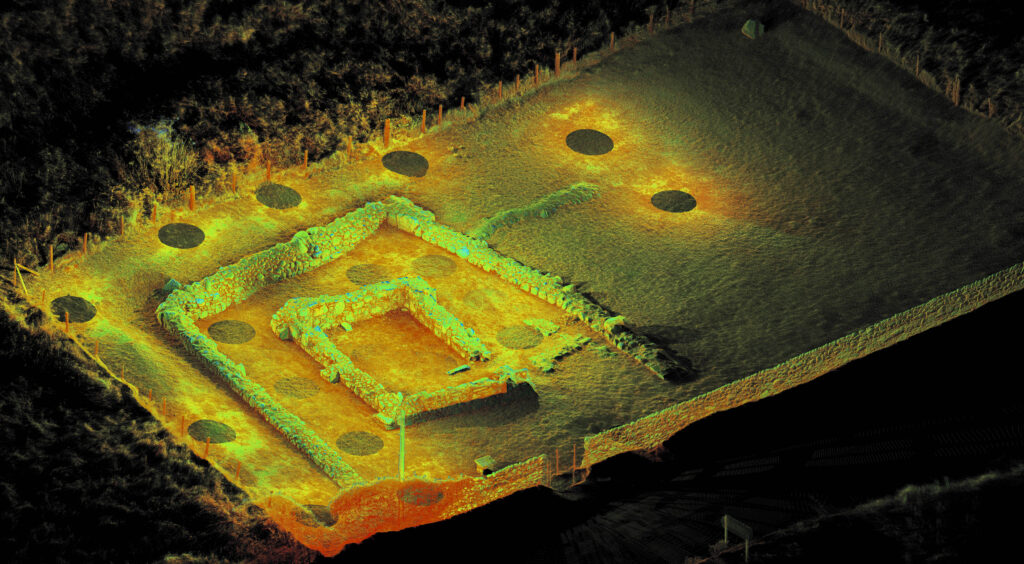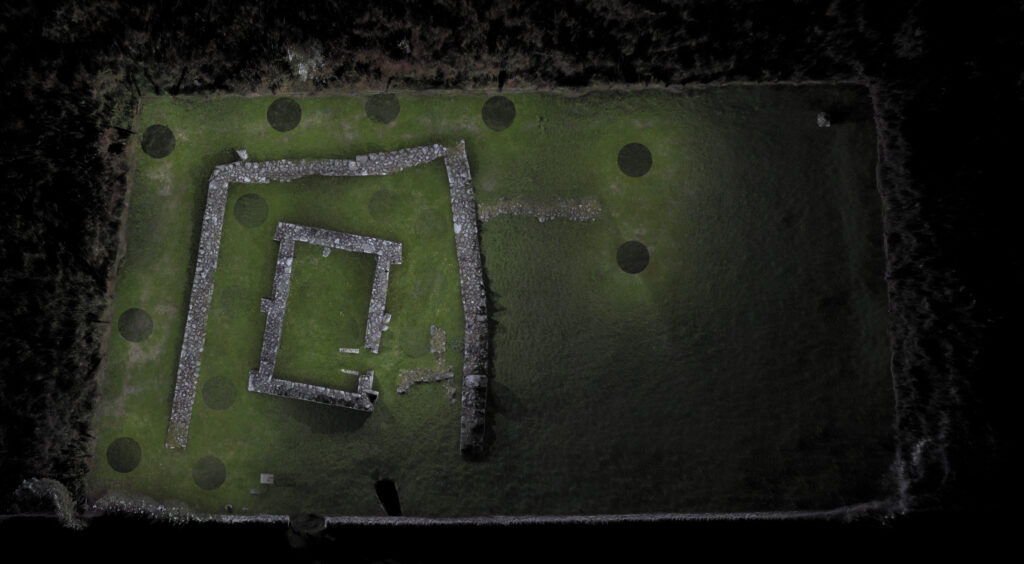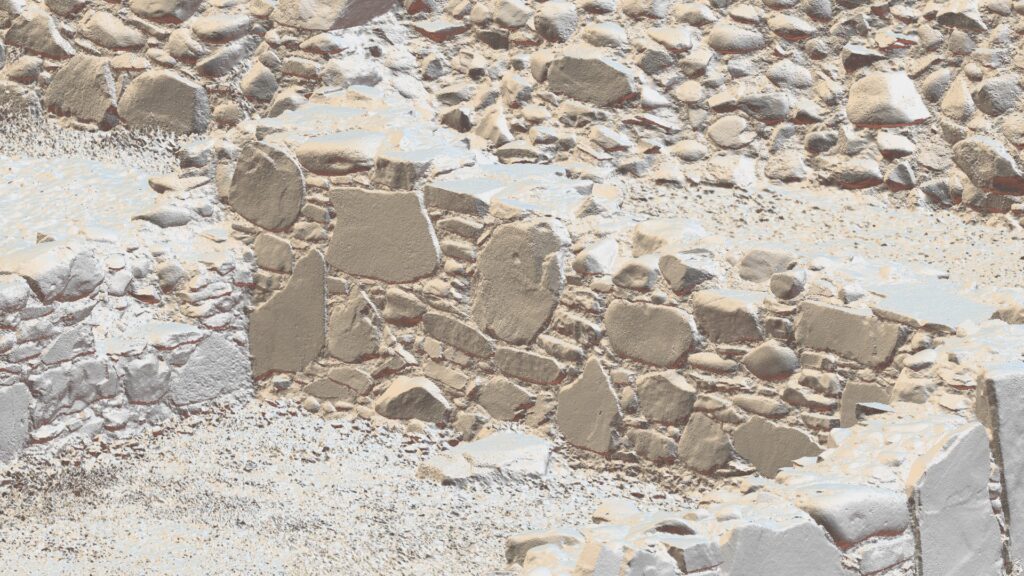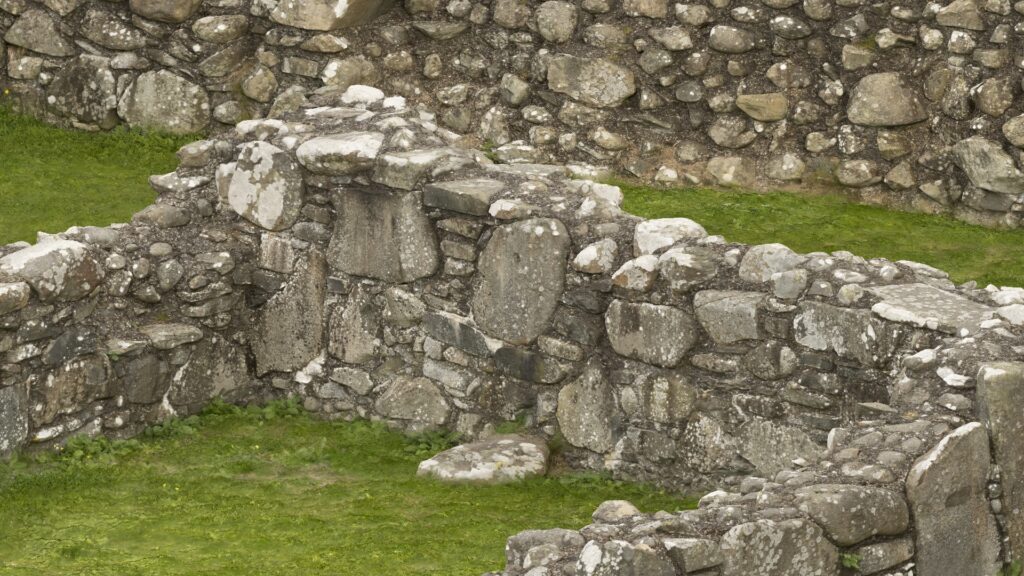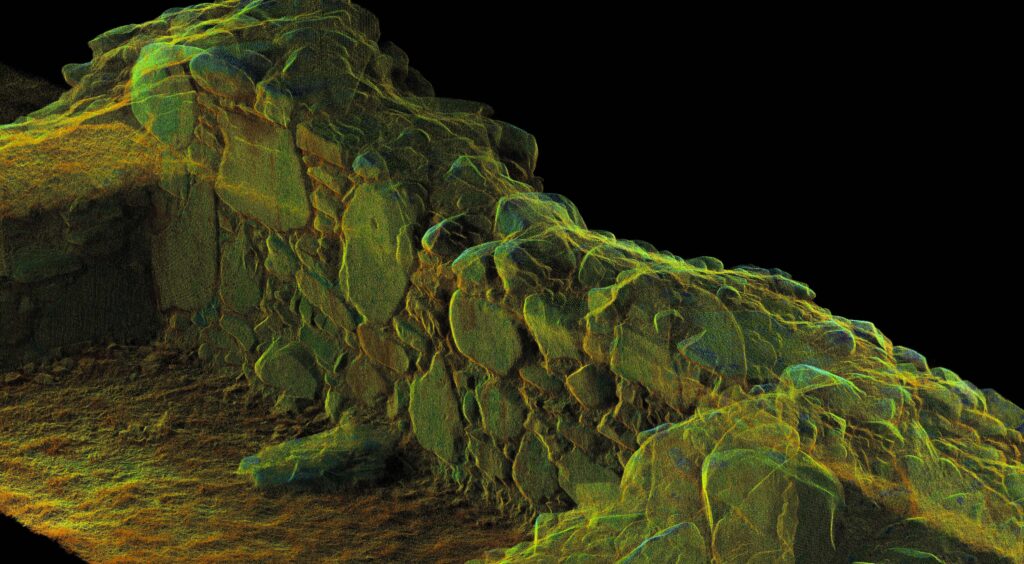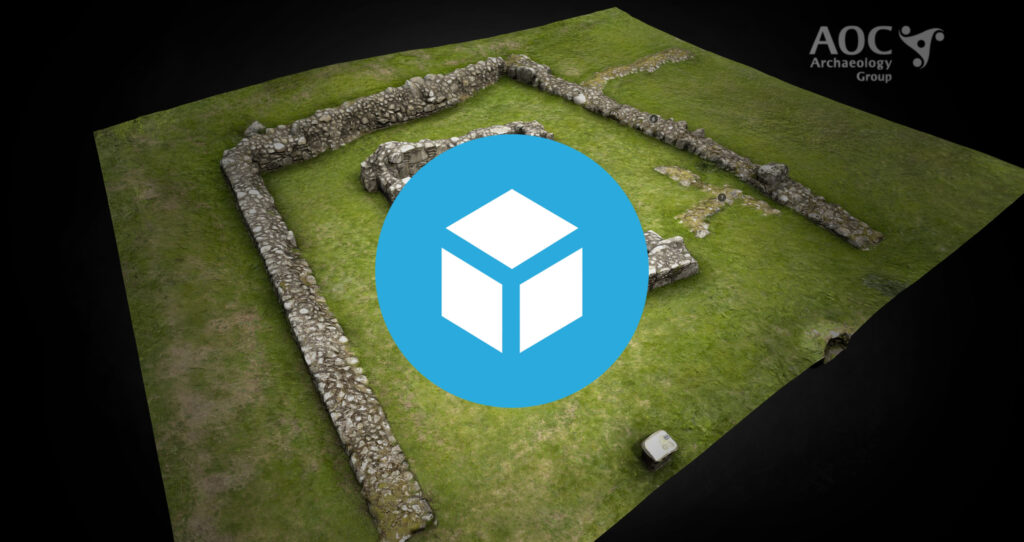Chapel Finian sits on the shores of the west Machars, a position which made it ideally placed to receive pilgrims arriving from Ireland and the Isle of Man, on their way to the major ecclesiastical centre at Whithorn. The site is dedicated to a Saint Finnian, perhaps Finnian of Moville who died c. 579 AD.
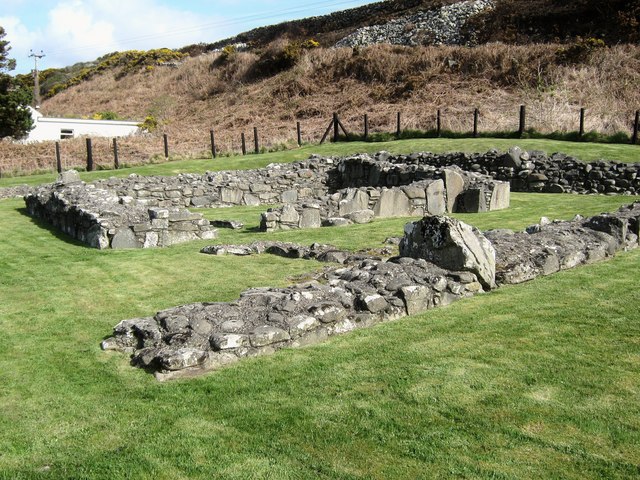
© Ann Cook and licensed for reuse under this Creative Commons Licence
Excavations were carried out by the archaeologist C.A. Ralegh Radford and the Dumfriesshire and Galloway Natural History and Antiquarian Society in 1950, revealing the footings of a small chapel, about 6m by 4m, with low mortared walls half a metre thick. Fragments of thick, coarse plaster found during the excavations suggest that the walls may have been rendered inside and out, while the lack of nails or evidence for slates suggests that the roof was probably thatched. A low stone enclosure wall surrounds the chapel, and the evidence from the excavations suggests this may have been built up with turf stripped from the nearby area.
The structure shows some unusual features, perhaps most notably the low ‘buttresses’, which are integrated into the walls (rather than representing repairs or later propping). This might suggest that the buttresses are related to the roofing of the building, and perhaps wooden crucks were supported on these bases. This design is unlike any early Irish chapel: where buttresses are found in Ireland these are added to the gable end walls (known as ‘antae’). Similarly, early Irish chapels have their doors in the gable end, unlike at Chapel Finian, where this is located in the south wall. So, while perhaps built to receive travellers from the Gaelic west, the building uses a local construction style.
No reliable dating evidence for the construction of the chapel was recovered by the excavations, and suggestions of date are largely based on comparisons with better understood sites. Ralegh Radford pointed to St Ninian’s Chapel on the Isle of Whithorn; his excavations there had shown that the visible building (later rebuilt for the Marquess of Bute) dated to the 1300s but overlay an earlier predecessor. On stylistic grounds he suggested that Chapel Finian should be earlier, but not as early as the sixth century saint to which it is dedicated: his estimate of 900 to 1000 AD has persisted as the best guess at the chapel’s construction date.
Perhaps a better comparison is provided by the nearby site at Barhobble, excavated by Cormack in the 1980s and 1990s. The stone chapel at Barhobble superseded earlier buildings, including a timber oratory, and shows several structural similarities with Chapel Finian, such as the placement of the door and the mid-wall buttressing. Artefacts recovered from Barhobble place its use in the 12th and 13th centuries.
3D Survey
Chapel Finian in 3D
AOC Archaeology and Whithorn Trust volunteers worked on site for a day, collecting laser scan and photogrammetry data. Combining those two methods together, allowed for capturing not only accurate 3D geometry, but also colour information. 3D data from photogrammetry and laser scanning was then combined with GNSS, allowing us to georeference the created 3D model, the final result can be viewed on Sketchfab.

